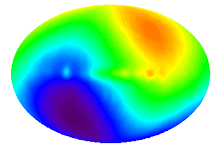Features of the gut brain axis
Nature Reviews Microbiology 10, 735-742 (November
2012)
The brain and the gut are intimately
connected via the gut–brain axis, which is a bidirectional communication system
involving neural and humoral mechanisms. Neural connections involve the
central, autonomic and enteric nervous systems. The enteric nervous system
receives modulatory input from the brain and provides information to the brain
via ascending neural circuits; it can also operate independently of the brain.
The effector limb of the enteric
nervous system integrates physiological responses (including gut motility and
secretion) and also modulates immune activity, as most immune cells possess
receptors for neurotransmitters. The afferent limb comprises sensory nerves
that contribute to gut reflexes and convey information to the brain. This
information includes signals about noxious stimuli such as gut distension, as
well as potentially dangerous signals, including the presence of bacterial
endotoxins or pro-inflammatory cytokines. This information is conveyed to the
brain and might result in pain, discomfort, or compensatory responses that are
aimed at restoring homeostasis; these responses might involve changes in the
gut physiology or immune function (for example, cytokine secretion).
The autonomic nervous system links
the gut and the brain and consists of sympathetic and parasympathetic nerves.
The vagus nerve is a major pathway for signals originating from the foregut and
the proximal colon, whereas sacral parasympathetic nerves innervate the distal
colon. The sympathetic system primarily exerts an inhibitory influence on the
gut, decreasing intestinal motor function and secretion via the release of
neurotransmitters such as noradrenaline. Responses to stress are conveyed via
the sympathetic system and the hypothalamic–pituitary–adrenal axis.
The autonomic input from the gut is
connected to the limbic system of the brain, the most important components of
which are the hippocampus, the amygdala and the limbic cortex. The limbic
system is responsible for a range of brain processes: the amygdala integrates
responses to fear and arousal, whereas the hippocampus is responsible for
memory and spatial navigation, and the limbic cortex regulates olfaction and
integrates sensory and motor functions. The limbic system receives input from
other brain regions that are responsible for a range of behaviours; these
regions include the prefrontal cortex, the anterior cingulated gyrus, the
temporal lobe and basal ganglia. Communication between the limbic and autonomic
systems provides the neural circuitry underlying the strong link between behaviour
and gut function in health (such as stomach 'butterflies') and disease (such as
irritable bowel syndrome).
The humoral components of the gut–brain axis consist
of the hypothalamic–pituitary–adrenal axis, the enteroendocrine system and the
mucosal immune system. The hypothalamic–pituitary–adrenal axis is responsible
for stress responses, resulting in the release of corticosterone, adrenaline
and noradrenaline. Enteroendocrine cells produce hormones such as
cholecystokinin and ghrelin, both of which regulate appetite, and
5-hydroxytryptamine, which has a broad range of effects on gut and brain
functions.

沒有留言:
張貼留言